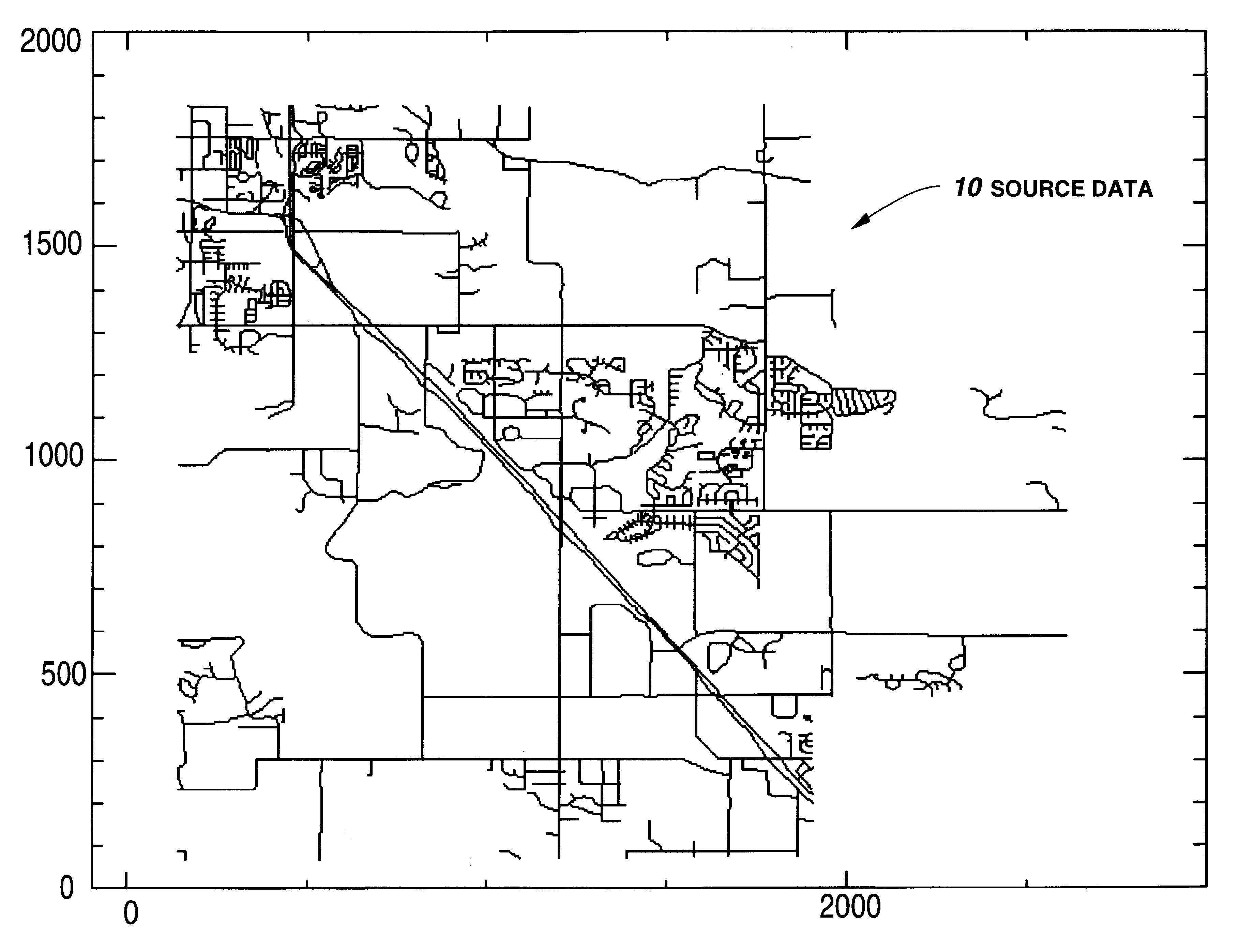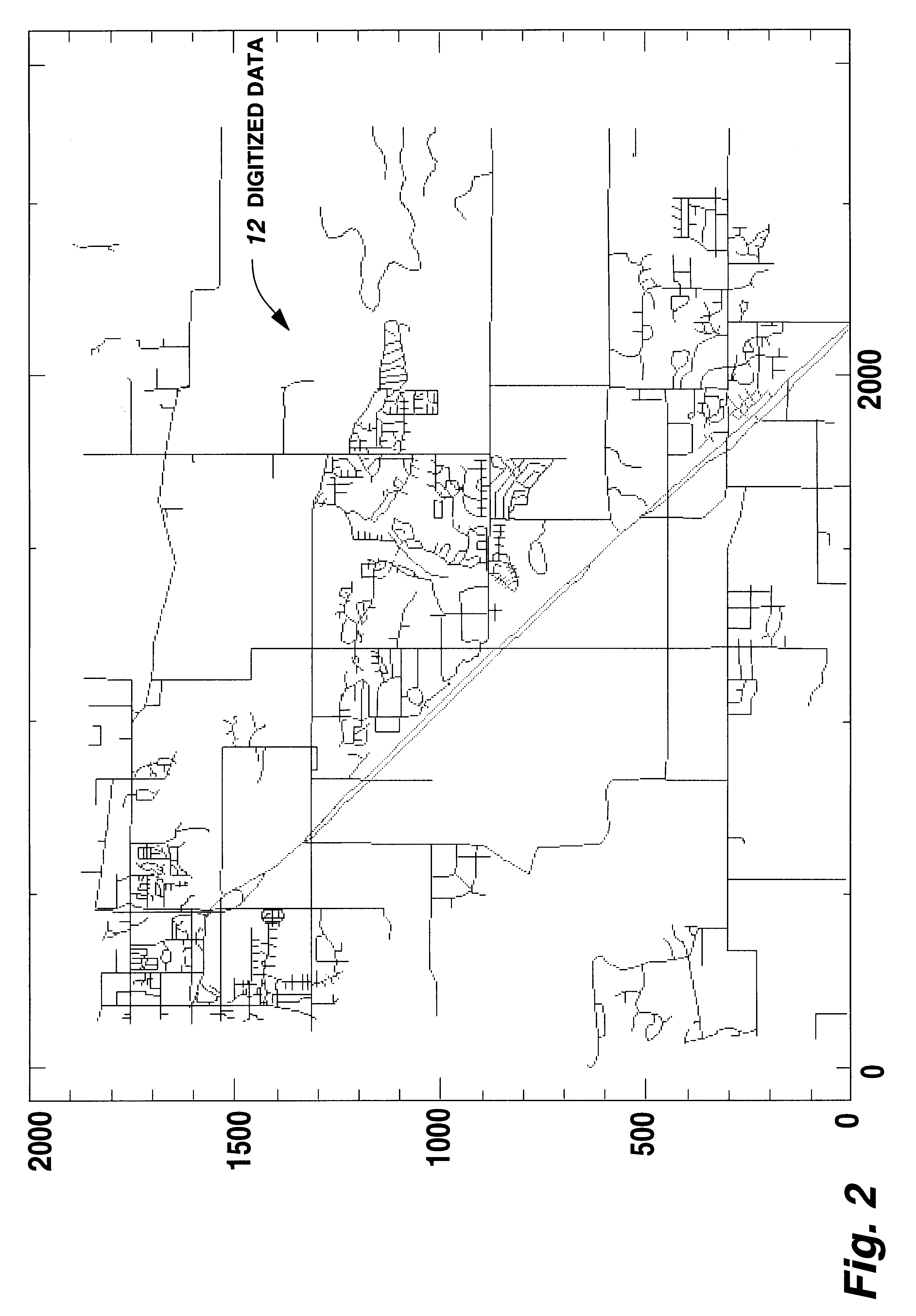System for matching nodes of spatial data sources
a technology of spatial data and matching nodes, applied in the field of conflicting, can solve problems such as scaling, skewing, offset, rotation, and source data that is faulty in some respects, and can not be spatially corr
- Summary
- Abstract
- Description
- Claims
- Application Information
AI Technical Summary
Problems solved by technology
Method used
Image
Examples
Embodiment Construction
FIG. 1 illustrates an example of a set of source data 10. As illustrated in FIG. 1, the source data 10 is representative of spatial data such as roads that are typically be illustrated in a map. In fact, the source data illustrated in FIG. 1 is a portion of the diagonal Highway 36 that is located between Boulder, Colo. and Longmont, Colo. The data is provided in vector format. The vector data indicates the beginning of the vector and its direction and length, to form each of the lines that indicate the roads shown in FIG. 1. Vectors can be formed from either straight lines or predetermined curves. The vector data can be provided in an ASCII format so that it can be decoded and read using standard ArcView software available from Esri Inc., Redlands, Calif. Of course, the data of FIG. 1 is represented in the form of a two-dimensional map having spatial coordinates. The data can similarly be representative of three-dimensional spatial coordinates or other additional coordinate systems ...
PUM
 Login to View More
Login to View More Abstract
Description
Claims
Application Information
 Login to View More
Login to View More - R&D
- Intellectual Property
- Life Sciences
- Materials
- Tech Scout
- Unparalleled Data Quality
- Higher Quality Content
- 60% Fewer Hallucinations
Browse by: Latest US Patents, China's latest patents, Technical Efficacy Thesaurus, Application Domain, Technology Topic, Popular Technical Reports.
© 2025 PatSnap. All rights reserved.Legal|Privacy policy|Modern Slavery Act Transparency Statement|Sitemap|About US| Contact US: help@patsnap.com



